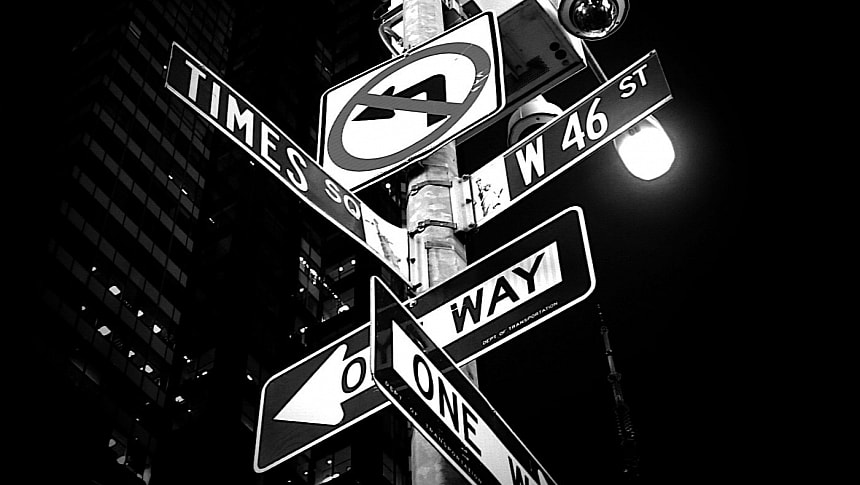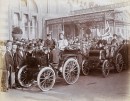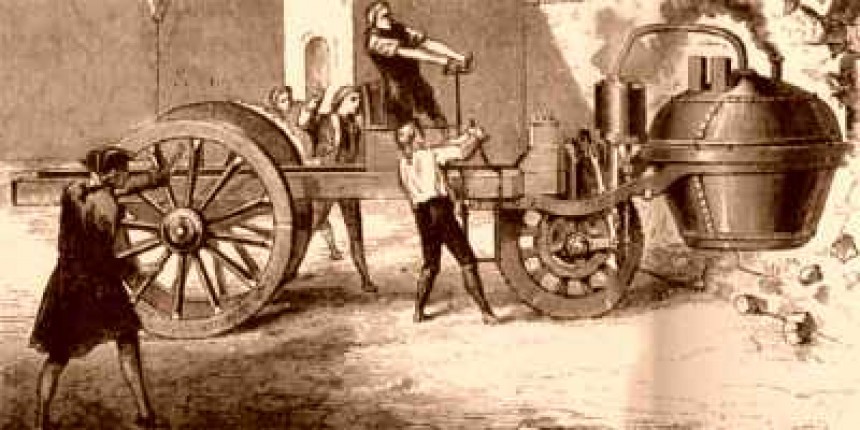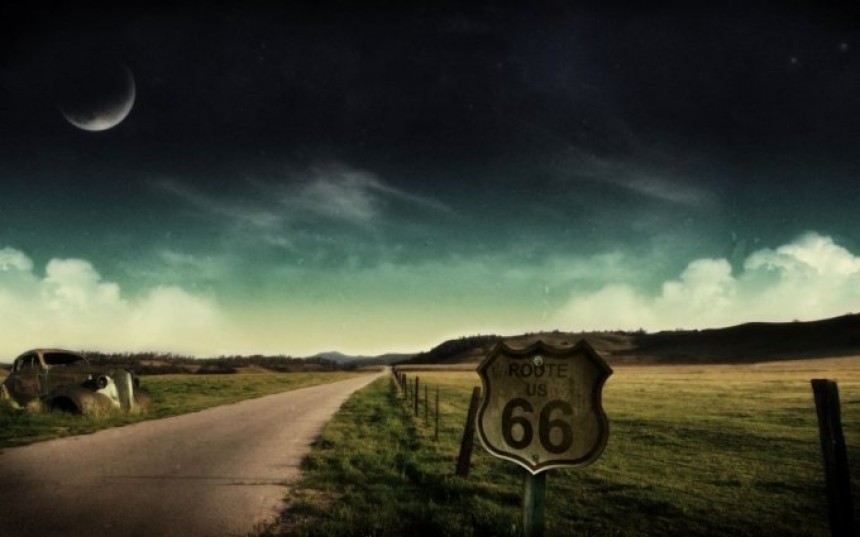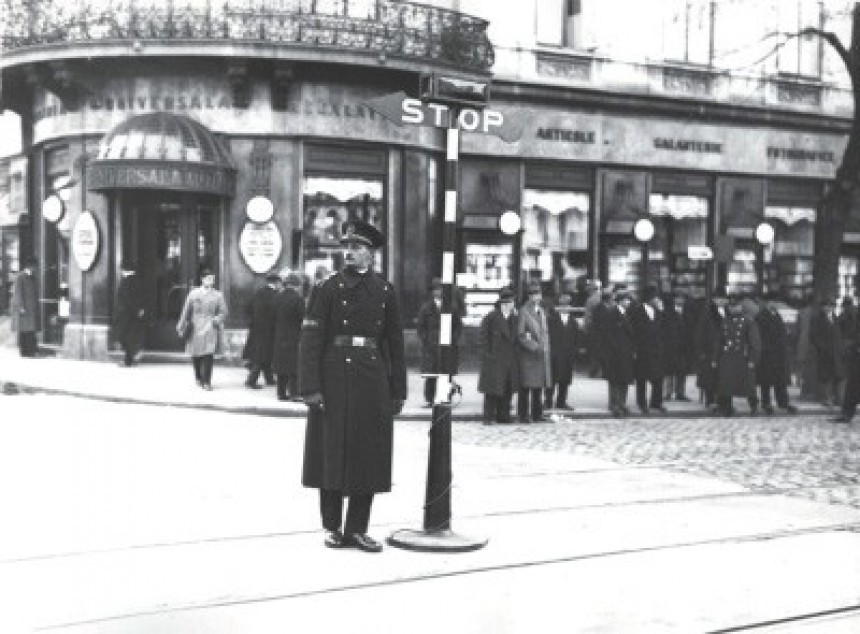If you kept an eye out on our cover stories over the many years we've been together, you know by now there's nothing we don't like to cover, as long as it is some sort of means of transportation. We've written about cars, vehicle designers, automobile brands, extra-terrestrial vehicles, cars and movies, cars and criminals, cars and police, electric cars, cars that are no longer around, cars that will probably never be, beautiful cars, ugly cars... In more recent times, we’ve even started covering, quite a lot, space exploration, boats and yachts, bicycles and, of course, aircraft of all shapes and sizes.
All fine and dandy, but there is one little aspect of the automobile world we haven't talked about as much, for one reason or another A crucial aspect in the absence of which the road vehicles of the world would be reduced to simple pieces of furniture, museum pieces, or extravagant works of art. An aspect that does not exist in any kind of physical form, but more often than not has much more drastic consequences on the life of a person than a solid, tangible object: traffic rules.
Often annoying and, at times, seemingly pointless, the rules that govern the traffic in the world’s cities and between them have been the automobile's silent companion for the better part of its existence. And without them, the world we live in today would have probably been a lot more messier than it actually is.
Given all of the above, we’ve decided it’s about time we take a closer look at the history of the traffic rules that have shaped our society. We are not here to give you a stiff, to-the-point presentation of what traffic rules are today, how they apply in whatever country, or why. As with any field of human activity, what matters here is what came first: the first traffic rules, the first road sign, the first ticket issued to someone for breaking the rules, the first crash and, unfortunately, the first fatality resulting from an accident.
Why, then, did those people feel the need to create legislation to cover... nothing?
Back in the 1800s the industrial revolution was still making the rounds, and that in part meant that the fields of the world started being transformed into railroads and, more importantly, witnessed the arrival of traction-engined vehicles, also known as road locomotives.
Just like the locomotives that pulled trains, the ones operating off-track were powered by steam. That wasn’t an issue in itself, but these things had to cross urban, populated areas to go about their business. Granted, they were slow, so they didn’t pose great dangers to unsuspecting denizens, but they were very noisy and caused a lot of commotion when moving about cities.
Scared by the prospects of a respectable citizen getting squashed, as well as by the prospects of hearing one of the damn things huffing and puffing in the quiet of the night, the British Parliament adopted in 1861 what became know as the Locomotive on Highways Act.
Knowing what we know now about how traffic rules must be like and how they are to be enforced, the provisions of this piece of legislation may seem somewhat hilarious. Yet some of the provisions of the Locomotive on Highways Act have become the cornerstones of today's traffic legislation.
Just to give you an idea of what that means, the Brits from more than 160 years ago required a road vehicle to not weigh more than 12 tons, and capped their maximum speed at ten mph (16 kph). Its unclear how they were able to determine if a road locomotive was overweight or overspeeding.
Several years after its introduction, in 1865, the original piece of legislation became the Locomotive Act, or the Red Flag Act. It stated, among other things, that a motorzied vehicle, regardless of its nature and purpose, was to be be preceded by a man carrying a red flag when traveling on the highway. As a side note, the people of that time called “highway” any kind of road, including streets and public footpaths.
The initial speed limit was reduced in the new Act to four mph (six kph) when the vehicle was in a non-urban area, and to just two mph (three kph) inside cities.
Most importantly, a new rule was introduced that required at least three people to operate a vehicle: the driver, the stoker (which is the person tasked with tending the steam hardware), and the one to carry the aforementioned flag, but also a lantern.
Perhaps the most important role was that of the flagbearer, as it was he who imposed a walking speed for the vehicle, but also warned approaching pedestrians and horse riders of their presence. You know, in case a steam locomotive moving down the street wasn’t big or noisy enough for one to see and hear.
The piece of legislation was further revised close to the turn of the century, in 1896, when something called the Emancipation Act was adopted. The most important changes were the elimination of the requirement to have three people operate a vehicle, but also an increase in the maximum allowed speed to a staggering (for that time) 14 mph (22 kph).
For the first time, a piece of legislation established a new vehicle category. Called light locomotives, these were machines under three tons, the forefathers of today’s trucks.
The adoption of the new piece of legislation was so important for the people of the era that its creator, Harry Lawson, organized in 1896 something called the London to Brighton Run. We now know the event as the London to Brighton Veteran Car Run, and by all accounts it is the longest-running motoring event in the history of the world.
There are strict rules for the event, as only cars manufactured before 1905 are allowed to take part. But there’s no shortage of those, it seems. Back in 2023, for instance, no less than 400 such vehicles covered the distance between Hyde Park in London and Brighton.
Because the motor pool increased in size, authorities needed a way to keep track of individual vehicles and who owned them. And whereas Britain is the blame for the first traffic piece of legislation, France is the country to point your finger at for giving birth to license plates: back in 1893 the country issued the first license plate.
It was however the Netherlands who established a proper entire system for keeping track of cars on a national level. The Europeans didn’t call them license plates, but driving permit, and It simply assigned numbers to vehicles.
Over in the U.S., New York was first to require license plates, and that happened in 1901. It was a strange sort of affair, as It was not the government who issued them. Instead, car owners could create their own plates. That was not the case in Massachusetts, which became the first American state to issue official plates in 1903.
We’re back in the UK for this, where the Motor Car Act was adopted in 1904. In addition to requiring each vehicle to have a license plate, the legislation introduced reckless driving and stipulated penalties for those who did it. The penalty would turn into an offense if the driver did not display the license plate on the car.
For the first time in the history of the world, people needed a driver’s license to be able to operate a car. But don’t go thinking the way to get one was to take classes and then pass an exam. All a wannabe driver needed to do was complete a form and pay five shillings.
As cars evolved and their numbers increased, nations across the world started requiring drivers to know how to operate a vehicle and the applicable traffic rules, and then even prove they do by taking an exam.
At the turn of last century, what is believed to be the world’s first traffic light was installed outside the British Parliament. It did not use electricity to run, but gas, and needed to be switched manually to display one of two colors, red or green. Because it used gas, it is said that a month or so after being installed the traffic light exploded, and it was never recreated again.
The idea of having colored light telling drivers what to do did caught on, especially over in the U.S., in the head of the man considered to be the inventor of the electric red-green traffic light, Lester Wire. One of his contraptions was installed in 1914 on the corner of East 105th Street and Euclid Avenue in Cleveland, Ohio.
It, too, came with two lights, but the hardware evolved to include a third color, yellow. A man called William Potts came up with the idea in 1920.
The first traffic lights were linked together in Salt Lake City in 1917, when the traffic installed in six intersections was simultaneouly controlled by means of a manual switch. Later, in 1922, in Houston, automated traffic lights surfaced.
As the UK, the nation that started this whole traffic light craze, it only got its first proper light system in 1927, in Wolverhampton.
These signs were primitive, by any standard, as they only served to mark various distances to important urban centers, and they only came as erected stone columns or rocks placed on the side of the roads. The Romans followed suit, and took this system to a whole new level.
Ancient road signs were only there to inform, as they did not actually instruct people on horses or wagons how to ride, what do to, and what o avoid doing. And that was the case for a very long time.
The first road sign system in its modern sense is said to have been created in 1895 by the Italian Touring Club, but little is known at this time what exactly it was all about. It was only in 1909 when a bunch of European countries agreed to use the same signs to alert travelers of such dangers as bumps, curves, or intersections.
The traffic sign system we use today dates back to the 1950s, but even if most of the signs are pretty much the same everywhere you go on this planet, work on a unified, complete system continues to this day. For instance, consider the fact that the U.S. had its own sign system until the 1960s, when it decided to switch to the international one.
Even if before cars arrived, travelers didn’t really use this or that side of the road to move, some archaeological finds over in Europe tend to suggest that the Romans, the people who connected the continent in ways that were never available before, used the left side of the road to go about their business.
Historians believe that was so because of a reason as trivial as human physiology. Most of us are right-handed and riding on a horse on the left side of the road allowed people to use their good hand to fend off attackers, for instance, or to more easily shake hands with friends.
It is largely believed that horse riding and wagon travelling was done on the left side of the road until the 1700s. In fact, the first documented road use restriction, dating back to 1756, stated that traffic on the London Bridge (not the current one, as the name has been used for ages to describe various crossings of the River Thames in the British capital) is to stay on the left side.
By the 1800s traffic on Europe’s roads increased dramatically, with wagons crisscrossing the continent in all directions. The drivers of these wagons usually stood on the last horse on the left, and that meant people found it easier to clear incoming wagons by using the right side of the road. That’s because the riders’ position allowed them to estimate distances better this way.
Slowly but surely, most of the world’s countries started using this approach, and in our present-day world that’s the most widespread way of doing things. Still, there are some 75 countries, including some major ones like the UK and Japan.
Today, most of the world uses the same rules for traffic, the same road signs, and the same ways of teaching people how to drive. Given the globalization level of our world, it can’t be any other way, as that would mean people would need to learn the rules of the land for every land they travel to. After all, standardization in all aspects of human activity must be one of the most impressive innovations of our species.
So, perhaps one day all the countries will drive or the same side of the road. Or maybe not, as roads might soon become obsolete, thanks to the increasing interest companies are giving vertical take-off and landing vehicles.
There are no standardized rules for them yet, but once they’re agreed upon, rest assured you’ll read all about the here on autoevolution.
Often annoying and, at times, seemingly pointless, the rules that govern the traffic in the world’s cities and between them have been the automobile's silent companion for the better part of its existence. And without them, the world we live in today would have probably been a lot more messier than it actually is.
Given all of the above, we’ve decided it’s about time we take a closer look at the history of the traffic rules that have shaped our society. We are not here to give you a stiff, to-the-point presentation of what traffic rules are today, how they apply in whatever country, or why. As with any field of human activity, what matters here is what came first: the first traffic rules, the first road sign, the first ticket issued to someone for breaking the rules, the first crash and, unfortunately, the first fatality resulting from an accident.
The first traffic legislation
Although they may seem a more recent gimmick, the rules that come together to form traffic legislation are a bit older than the cars themselves, dating back to the 1800s. Yet, when you read the lines below, you should keep in mind that the people who lived back then understood something else entirely from the term “traffic” than we do today. After all, with no cars in the sense we understand them today around there was also no asphalt, no traffic lights, no traffic signs, no street markings, no traffic police.Why, then, did those people feel the need to create legislation to cover... nothing?
Back in the 1800s the industrial revolution was still making the rounds, and that in part meant that the fields of the world started being transformed into railroads and, more importantly, witnessed the arrival of traction-engined vehicles, also known as road locomotives.
Scared by the prospects of a respectable citizen getting squashed, as well as by the prospects of hearing one of the damn things huffing and puffing in the quiet of the night, the British Parliament adopted in 1861 what became know as the Locomotive on Highways Act.
Knowing what we know now about how traffic rules must be like and how they are to be enforced, the provisions of this piece of legislation may seem somewhat hilarious. Yet some of the provisions of the Locomotive on Highways Act have become the cornerstones of today's traffic legislation.
Just to give you an idea of what that means, the Brits from more than 160 years ago required a road vehicle to not weigh more than 12 tons, and capped their maximum speed at ten mph (16 kph). Its unclear how they were able to determine if a road locomotive was overweight or overspeeding.
Several years after its introduction, in 1865, the original piece of legislation became the Locomotive Act, or the Red Flag Act. It stated, among other things, that a motorzied vehicle, regardless of its nature and purpose, was to be be preceded by a man carrying a red flag when traveling on the highway. As a side note, the people of that time called “highway” any kind of road, including streets and public footpaths.
The initial speed limit was reduced in the new Act to four mph (six kph) when the vehicle was in a non-urban area, and to just two mph (three kph) inside cities.
Most importantly, a new rule was introduced that required at least three people to operate a vehicle: the driver, the stoker (which is the person tasked with tending the steam hardware), and the one to carry the aforementioned flag, but also a lantern.
The piece of legislation was further revised close to the turn of the century, in 1896, when something called the Emancipation Act was adopted. The most important changes were the elimination of the requirement to have three people operate a vehicle, but also an increase in the maximum allowed speed to a staggering (for that time) 14 mph (22 kph).
For the first time, a piece of legislation established a new vehicle category. Called light locomotives, these were machines under three tons, the forefathers of today’s trucks.
The adoption of the new piece of legislation was so important for the people of the era that its creator, Harry Lawson, organized in 1896 something called the London to Brighton Run. We now know the event as the London to Brighton Veteran Car Run, and by all accounts it is the longest-running motoring event in the history of the world.
There are strict rules for the event, as only cars manufactured before 1905 are allowed to take part. But there’s no shortage of those, it seems. Back in 2023, for instance, no less than 400 such vehicles covered the distance between Hyde Park in London and Brighton.
First license plates
As soon as the century turned and the Germans got on the line, the number of vehicles on the world’s roads started to increase. Compared to what came before, these new motorized contraptions were powered by internal combustion engines, and that made them faster and able to run for longer.Because the motor pool increased in size, authorities needed a way to keep track of individual vehicles and who owned them. And whereas Britain is the blame for the first traffic piece of legislation, France is the country to point your finger at for giving birth to license plates: back in 1893 the country issued the first license plate.
Over in the U.S., New York was first to require license plates, and that happened in 1901. It was a strange sort of affair, as It was not the government who issued them. Instead, car owners could create their own plates. That was not the case in Massachusetts, which became the first American state to issue official plates in 1903.
First driver's license
Now that most of the world had a way of knowing what vehicle belonged to who, authorities also needed a way to allow people to drive them only if they knew what they were doing. And that’s how the idea of a driver’s license came to be.We’re back in the UK for this, where the Motor Car Act was adopted in 1904. In addition to requiring each vehicle to have a license plate, the legislation introduced reckless driving and stipulated penalties for those who did it. The penalty would turn into an offense if the driver did not display the license plate on the car.
For the first time in the history of the world, people needed a driver’s license to be able to operate a car. But don’t go thinking the way to get one was to take classes and then pass an exam. All a wannabe driver needed to do was complete a form and pay five shillings.
As cars evolved and their numbers increased, nations across the world started requiring drivers to know how to operate a vehicle and the applicable traffic rules, and then even prove they do by taking an exam.
First traffic lights
In all fairness, the traffic lights date back further than the get-it-yourself driver’s license. Lights on the roads to signal cars what they can and can’t do are the work of the Brits as well.The idea of having colored light telling drivers what to do did caught on, especially over in the U.S., in the head of the man considered to be the inventor of the electric red-green traffic light, Lester Wire. One of his contraptions was installed in 1914 on the corner of East 105th Street and Euclid Avenue in Cleveland, Ohio.
It, too, came with two lights, but the hardware evolved to include a third color, yellow. A man called William Potts came up with the idea in 1920.
The first traffic lights were linked together in Salt Lake City in 1917, when the traffic installed in six intersections was simultaneouly controlled by means of a manual switch. Later, in 1922, in Houston, automated traffic lights surfaced.
As the UK, the nation that started this whole traffic light craze, it only got its first proper light system in 1927, in Wolverhampton.
First traffic sign system
Perhaps the oldest tools road-goers have had at their disposal when setting out on a journey were traffic signs. These things date back millennia, to the city of Ur (present-day Iraq), where the first one were used since some 4,000 years BC.These signs were primitive, by any standard, as they only served to mark various distances to important urban centers, and they only came as erected stone columns or rocks placed on the side of the roads. The Romans followed suit, and took this system to a whole new level.
The first road sign system in its modern sense is said to have been created in 1895 by the Italian Touring Club, but little is known at this time what exactly it was all about. It was only in 1909 when a bunch of European countries agreed to use the same signs to alert travelers of such dangers as bumps, curves, or intersections.
The traffic sign system we use today dates back to the 1950s, but even if most of the signs are pretty much the same everywhere you go on this planet, work on a unified, complete system continues to this day. For instance, consider the fact that the U.S. had its own sign system until the 1960s, when it decided to switch to the international one.
Right/left side of the road
The vast majority of the countries of this planet use the right side of the road to move. There are some, of course, like the UK and some of the countries it ruled over the centuries, that move on the left side of the road. And despite the fact that most of the world believes it is the British that got things all wrong, the reality is quite the opposite, in fact. At least when you think about this from a historical perspective.Even if before cars arrived, travelers didn’t really use this or that side of the road to move, some archaeological finds over in Europe tend to suggest that the Romans, the people who connected the continent in ways that were never available before, used the left side of the road to go about their business.
Historians believe that was so because of a reason as trivial as human physiology. Most of us are right-handed and riding on a horse on the left side of the road allowed people to use their good hand to fend off attackers, for instance, or to more easily shake hands with friends.
It is largely believed that horse riding and wagon travelling was done on the left side of the road until the 1700s. In fact, the first documented road use restriction, dating back to 1756, stated that traffic on the London Bridge (not the current one, as the name has been used for ages to describe various crossings of the River Thames in the British capital) is to stay on the left side.
By the 1800s traffic on Europe’s roads increased dramatically, with wagons crisscrossing the continent in all directions. The drivers of these wagons usually stood on the last horse on the left, and that meant people found it easier to clear incoming wagons by using the right side of the road. That’s because the riders’ position allowed them to estimate distances better this way.
Slowly but surely, most of the world’s countries started using this approach, and in our present-day world that’s the most widespread way of doing things. Still, there are some 75 countries, including some major ones like the UK and Japan.
Today, most of the world uses the same rules for traffic, the same road signs, and the same ways of teaching people how to drive. Given the globalization level of our world, it can’t be any other way, as that would mean people would need to learn the rules of the land for every land they travel to. After all, standardization in all aspects of human activity must be one of the most impressive innovations of our species.
So, perhaps one day all the countries will drive or the same side of the road. Or maybe not, as roads might soon become obsolete, thanks to the increasing interest companies are giving vertical take-off and landing vehicles.
There are no standardized rules for them yet, but once they’re agreed upon, rest assured you’ll read all about the here on autoevolution.
